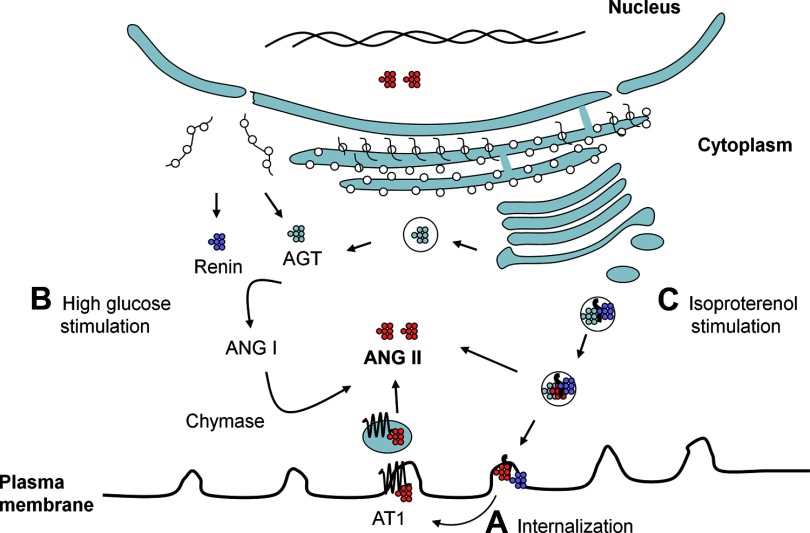Fig. 2.
Sources of intracellular ANG II in cardiomyocytes. A, internalization: ANG II-AT1 receptor complex undergoes internalization in the process of cellular signaling. The complex dissociates intracellularly, resulting in the degradation or release of ANG II in the cytoplasm. B, high-glucose stimulation: intracellular synthesis following stimulation with high glucose. The precise intracellular site of ANG II synthesis is not known; however, it appears to occur outside of the secretory pathway. In cardiomyocytes, renin and chymase are involved in intracellular ANG II synthesis. C, isoproterenol stimulation: intracellular synthesis following stimulation with isoproterenol: In this case, ANG II synthesis likely occurs inside the secretory vesicles, due to cosorting of AGT, renin, and ACE. Part of the secretory vesicle ANG II content is released into the cytoplasm, while what remains is secreted outside of the cell. Cytoplasmic ANG II can freely diffuse into nucleus due to the small size. ANG II likely has multiple interaction sites in the cytoplasmic organelles and nucleus.

